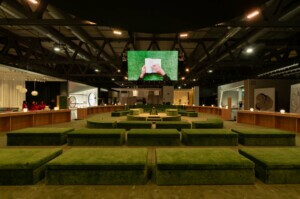Laura Poitras is among the most respected documentarians of our time whose work engages highly-sensitive news stories. In Citizenfour (2014), Poitras and Glenn Greenwald told the story of the ex-NSA employee-turned-whistleblower Edward Snowden, the rise of the surveillance state in the U.S. after 9/11, and government-backed torture during the War on Terror—a film which earned her an Oscar and the reporting received a Pulitzer Prize for Public Service. Her most recent project, All the Beauty and the Bloodshed (2022), followed the activist/artist Nan Goldin while she and her comrades exposed the Sackler family’s crimes at Purdue Pharma, and forced the museum world to reckon with one of its biggest patrons.
This summer, Poitras commissioned Aardvark Interiors, a Brooklyn-based design and fabrication studio led by kinetic artist Jason Gandy, to build a storage unit in her New York City editing studio. He then made it into an Edward Snowden–themed installation. HIJAK:MATRIX consists of two dioramas seen through peepholes. The result is a chilling, Marcel Duchamp–inspired, shoe box–sized critique of the post-9/11 surveillance state that reminds us privacy is illusory. AN spoke with both Poitras and Gandy about the project.

AN: Can you walk us through what we’re seeing?
Laura Poitras: What you’re seeing is a custom-designed storage unit in my editing studio by Jason. Within the storage unit, there are two dioramas: one depicting a leaked document and the other was hacked by Jason, who installed his own art piece in the project. His piece depicted people in the NSA headquarters watching Edward Snowden on a monitor. Snowden is looking at a secret government black site with two interrogators and a confinement crate created for torture. Even deeper in the piece, there’s a fisheye mirror inside the crate that reflects your eyes back to you, giving the impression that you are the person in the crate. It’s a piece that has many different layers to it.
Jason Gandy: The dioramas themselves are very low tech. They’re made out of action figures from a local comic bookstore in Brooklyn, bobbleheads, that sort of thing. Everything else is cardboard and paper held together by glue for the most part.
AN: How did this project start?
JG: You could say it began around 2010 or 2012 when Laura first hired me to build kitchen cabinets in her apartment. This was way before Citizenfour and the story of Edward Snowden came out. When I first started working with her, I didn’t know much about her besides that she was a documentarian. But when her coverage with Glenn Greenwald broke, she was in Germany and basically getting the Julian Assange treatment by the U.S. government. Her and Greenwald were America’s most wanted at that point. I couldn’t get in touch with her by phone anymore. It had to be through encrypted emails. And we weren’t sure exactly if she’d ever be able to return to America and if we’d ever see her again. They were saying she might get locked up for life. It all seemed pretty serious at the time.
I wasn’t really friends with her yet. We had only met a few times. But then we completed the cabinets, and she managed to pay me from exile. That was also when we figured out I was also on some sort of watch list because I was having correspondence with her. We just assumed that the apartment was bugged. It was a weird time.
Fast forward a few years, Laura is back in the country. She was still getting harassed and interrogated; her computer was confiscated, but she was legally allowed back. For the most part she was able to lead a fairly normal life as a documentarian. Move forward three or four more years later, that’s when Laura asked us to build some storage cabinets in her editing studio.
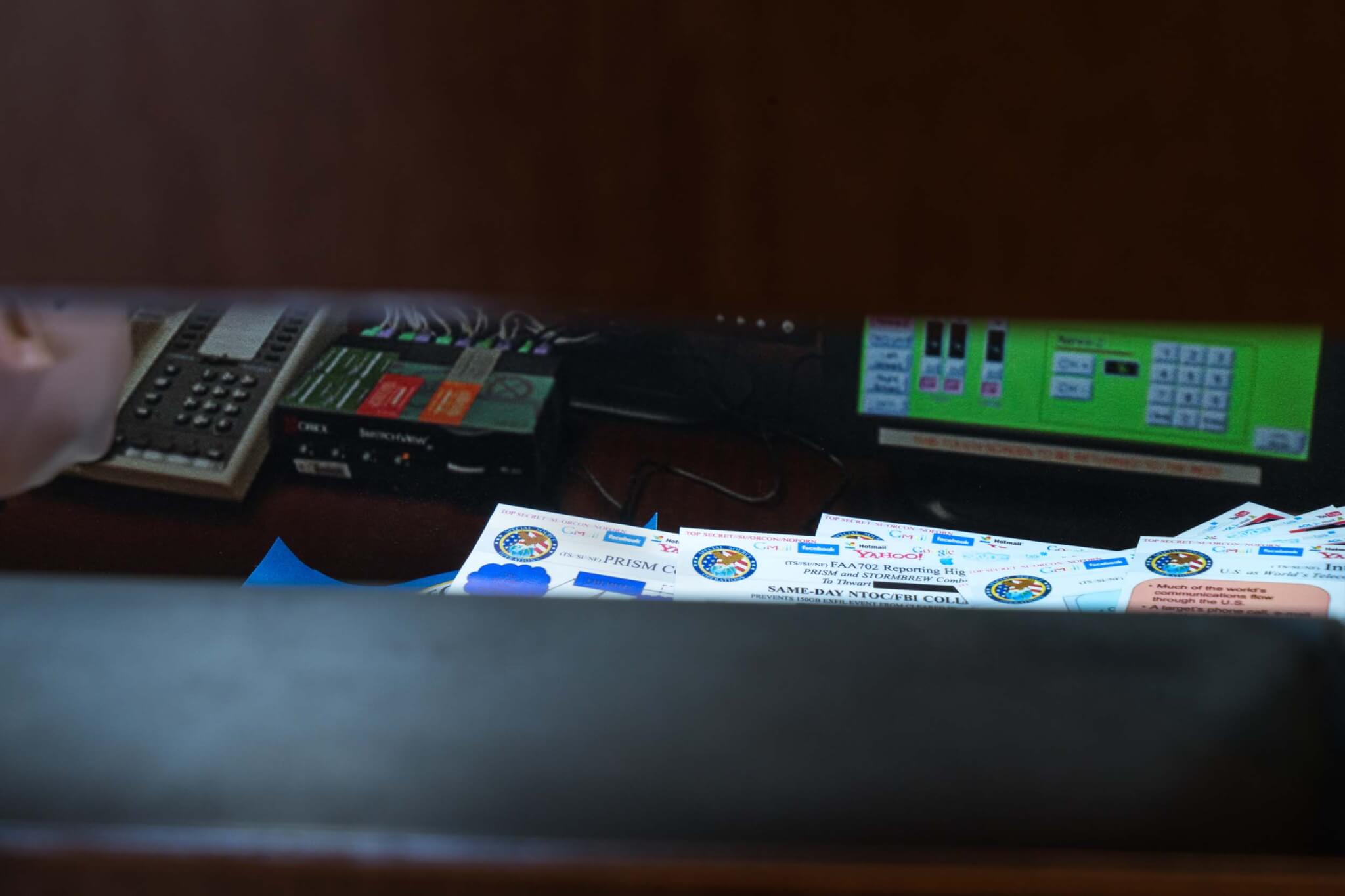
AN: This piece is in Laura’s editing studio and not a big museum. How does HIJAK:MATRIX relate to Laura’s 2016 exhibition at the Whitney?
JG: Laura did a solo show at the Whitney that I found really interesting. Laura made these illuminated, rectangular holes, about 15 or 16 of them, in the wall of a darkened gallery. When you peeked into the holes, you’d see leaked documents from the Edward Snowden cache. Some of the documents had pictures of torture machines from black sites in Eastern Europe, some described how U.S. federal agents would torture people. Some also had drawings of the torture instruments, and others were leaked files of NSA agents on record explaining how the government surveils people.
When I started on the storage cabinet, I asked Laura about what happened to her piece at the Whitney. I thought it would still be in a museum somewhere, but she said that she had them. I had the idea to put them into the storage wall. But then I had the crazy idea of putting my own piece in there. Or, rather, to do my own diorama piece specifically tailored to her, because at that point we had had so much history together.
This was a pretty late stage idea, like three days before the cabinetry was to be installed. I thought this was a huge opportunity to do something fun about Edward Snowden that also tied in her work at the Whitney.
I basically had a couple days to throw something together. Next thing I did was go down to the nearest comic bookstore to buy action figures for the diorama. I was specifically looking for businessman action figures I could use to depict NSA agents and Snowden. I ended up buying one Michael Scott bobblehead and a Green Lantern character for the NSA agents and this generic doll of a guy in a sweater with glasses for Snowden that sort of looked like him, but not really.
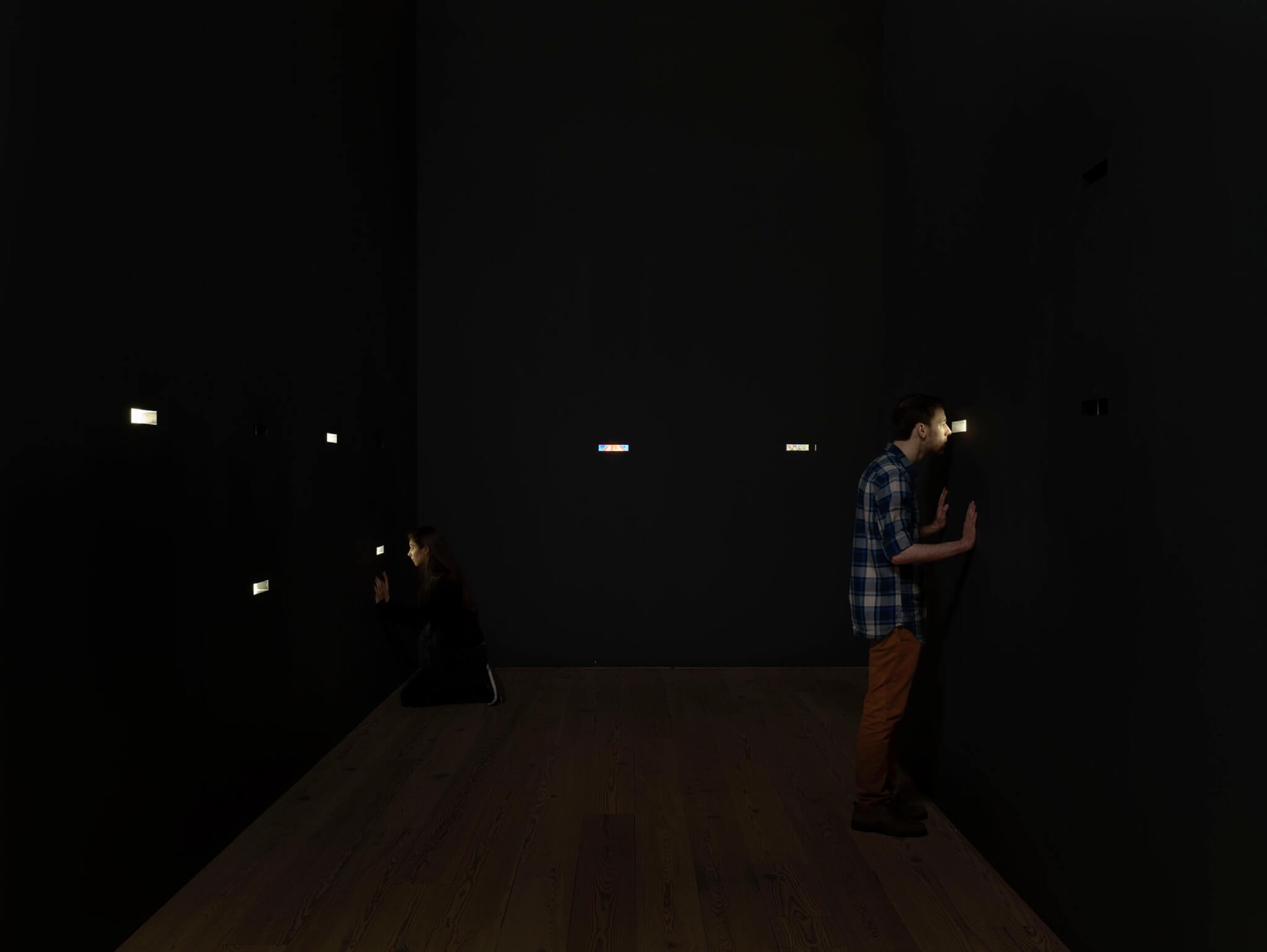
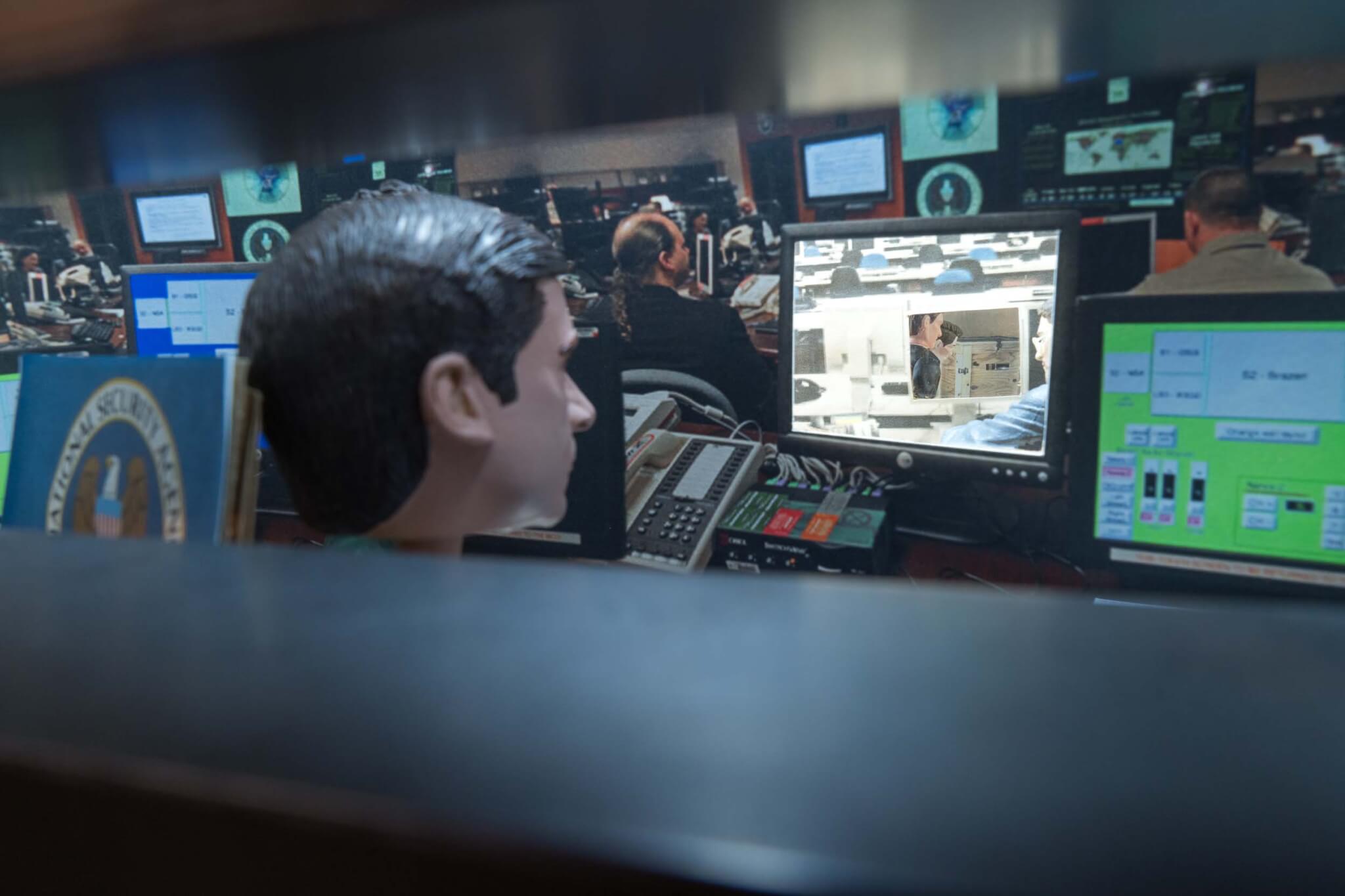
AN: So the NSA agents are basically Mr. Smith types from The Matrix?
JG: Yea. I wanted to make them look like stooges, like goofy little guys that are surveilling Edward Snowden. At this point I’m working quick and dirty, you know, just working with ready made things as quickly as possible. But then the story evolved.
I ended up procuring a 3D scan of Edward Snowden’s head. So I printed a 1-inch, 3D print of his head using the 3D model, plucked out the action figure’s head, and glued the 3D-printed Snowden head including his wire rimmed glasses, and then painted it to match his features like his stubble and little mole. Afterward, we played with the lighting to make it more dramatic.
Before we 3D printed the head, I would have had to tell viewers, “This character represents Edward Snowden.” But with the 3D print, I didn’t need to explain. So the NSA agents are these sort of abstractions while the figure depicting Snowden is very him.
AN: In past interviews, Laura, you, mentioned that Patrick Radden Keefe was surveilled by private contractors when writing his book about the Sacklers. You’ve also said FBI agents are sometimes present when you give public lectures. Does the pressure that comes with working on highly volatile subjects weigh into the piece? What’s it like working on these stories?
LP: It’s an interesting question. I spent decades of my life being very aware of the reality that the government surveils people it wants to silence. I know that I’ve been surveilled. I’ve sued the government and gotten parts of my FBI file. So it’s not my imagination at work here.
Getting surveilled impacts who you are, how you trust people who come into your orbit. You find yourself asking: Who are they? Who do they represent? Are they informants? The U.S. government has a long history of sending informants to enter communities that they’re interested in either intimidating or silencing. But that’s a long story.
In the case of my most recent film and Patrick Radden Keefe, that wasn’t government surveillance. They were private security contractors who were hired by wealthy individuals, but the goal is always the same: to intimidate and to get you to stop reporting. People often talk about surveillance and say things like: Well, I have nothing to hide. But that is a weak argument.
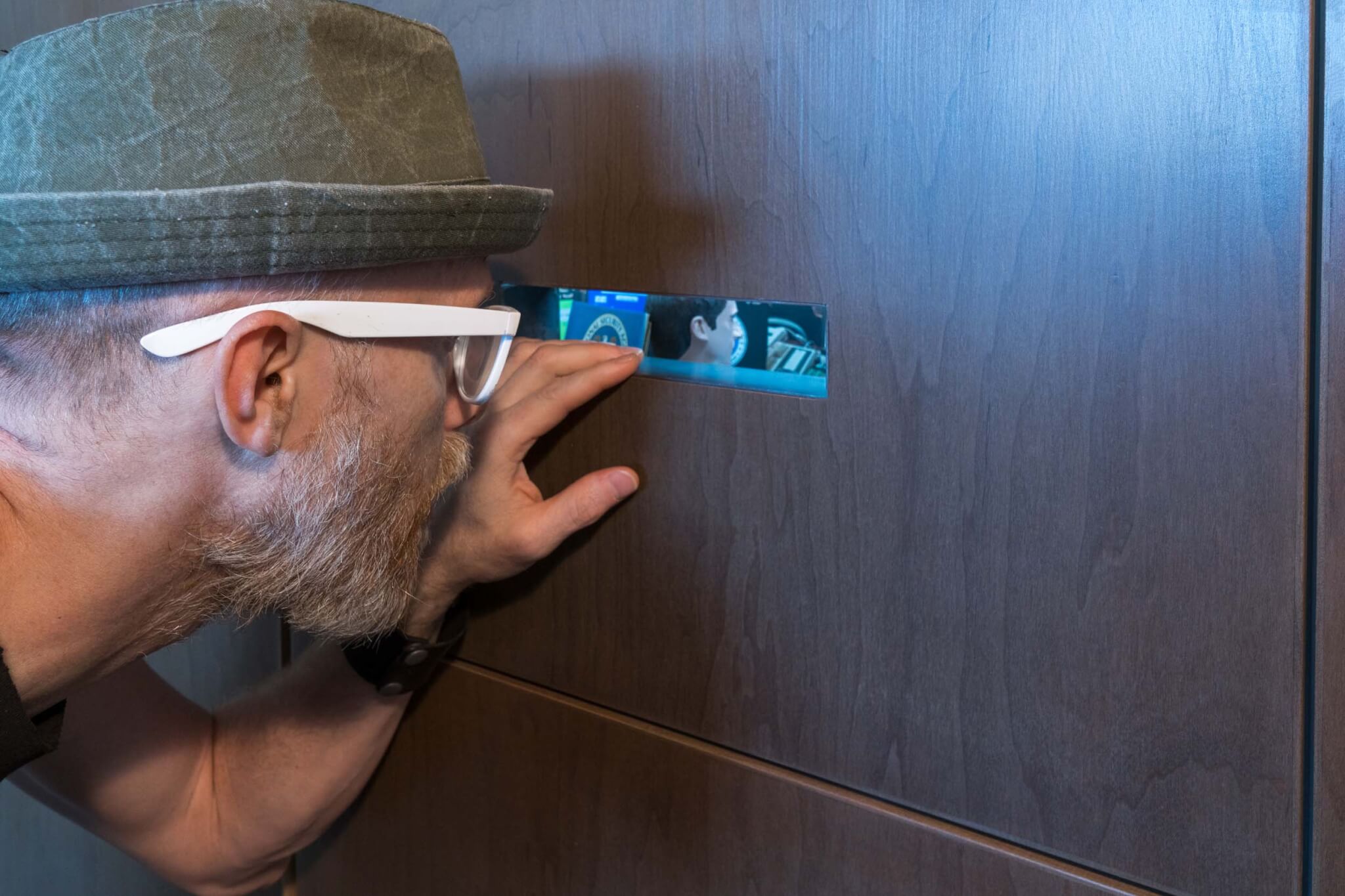
AN: Why do you think it’s such a weak argument?
LP: There’s a lot of ways to respond to that argument. What would you say to someone who asks for the password to your phone, or the keys to your house?
Then there’s the solidarity component. You might not be someone who defines yourself as a dissident or even critical of power structures, but if you believe in people’s rights to be critical and in a strong adversarial press, then it is in your interests to fight against these things. Also, you might be the one someday getting watched. So it’s in everyone’s interest.
The “I don’t have anything to hide” argument opens up the door for authoritarianism. If you look at East Germany, the dark days of the Stasi when you didn’t know if your neighbor was reporting you to the government, that isn’t how anyone wants to live. So that argument is coming from a place of extreme privilege.
AN: You clearly take serious risks in your work.
LP: Each of the risks I’ve taken are ones that I’ve chosen, which is very different from, say, the people who I often document who don’t get to choose, right? The citizens of Iraq did not choose to be invaded and occupied, so I always try to put that in perspective: That I made the choice to go into those environments where I know there will be pushback. I do that knowingly and document what I think are abuses of power.
Whether it be the U.S. government, or corporate power, in the case of the Sackler family, I go into these stories with my eyes wide open knowing that there will very likely be retaliation. I think it’s essential that no matter what we’re covering—whether war, corporate greed, or real estate—we remind ourselves we’re dealing with real people’s lives, right? That motivates me. All journalism should be motivated by a kind of adversarial position towards power.







